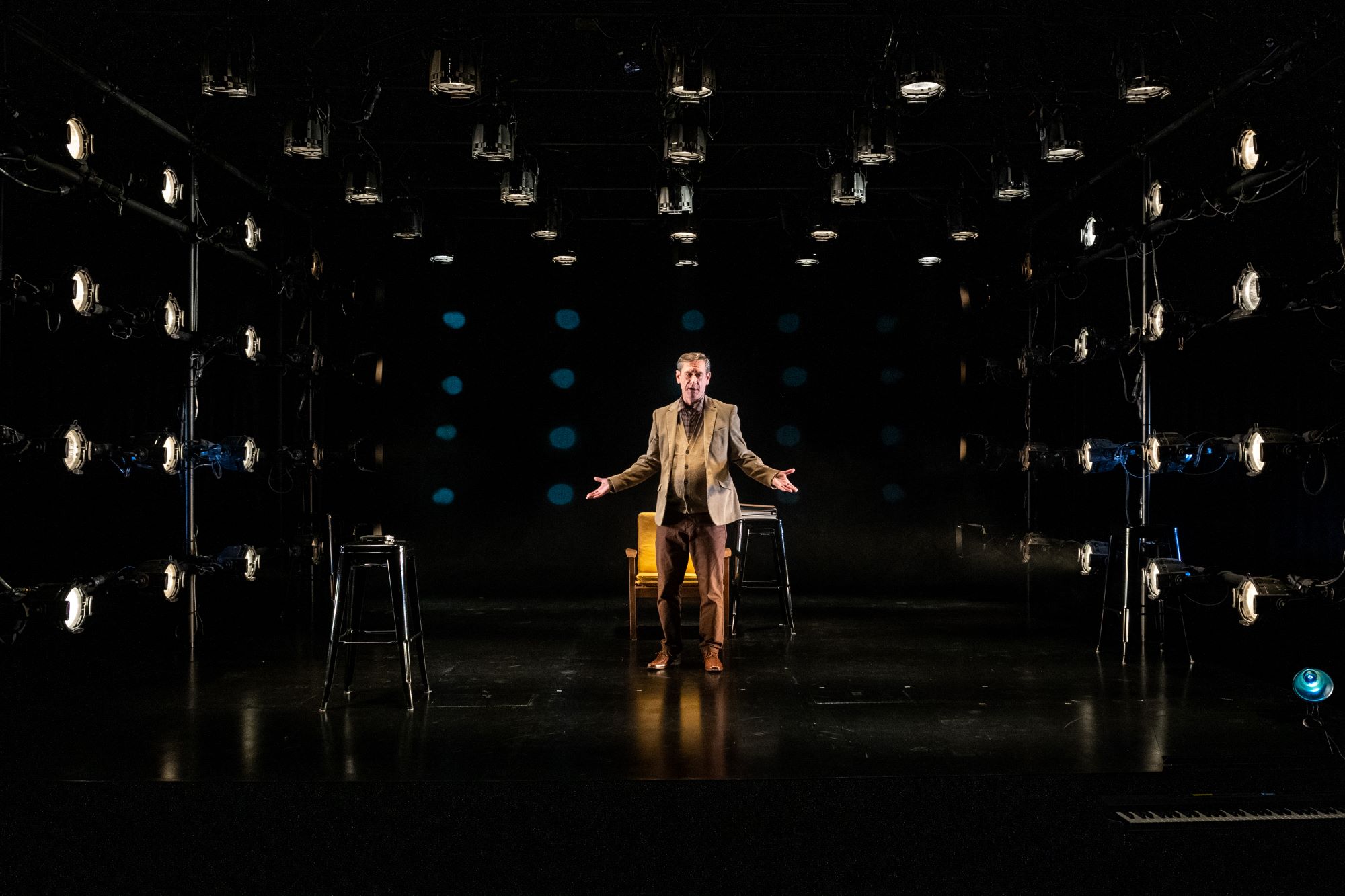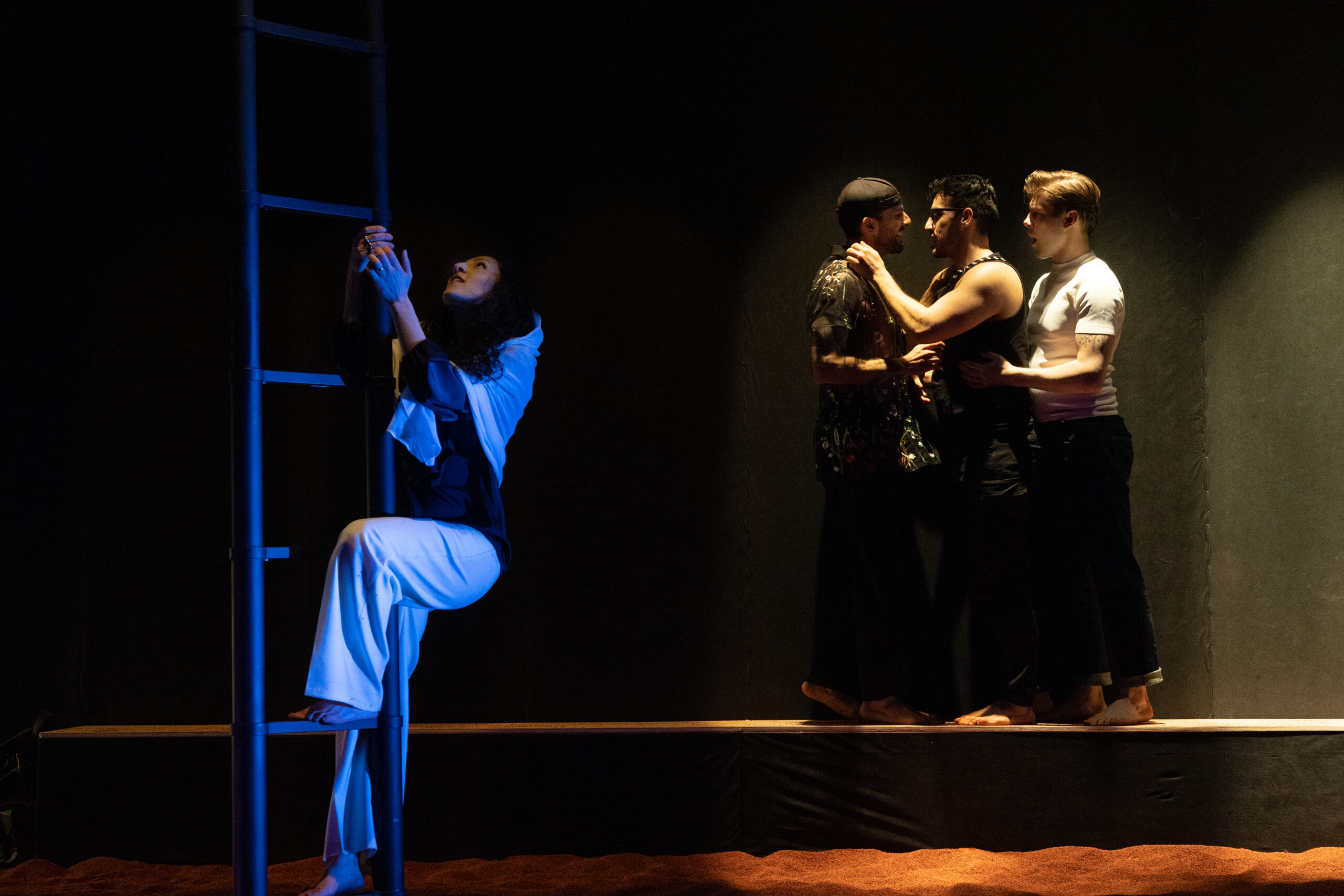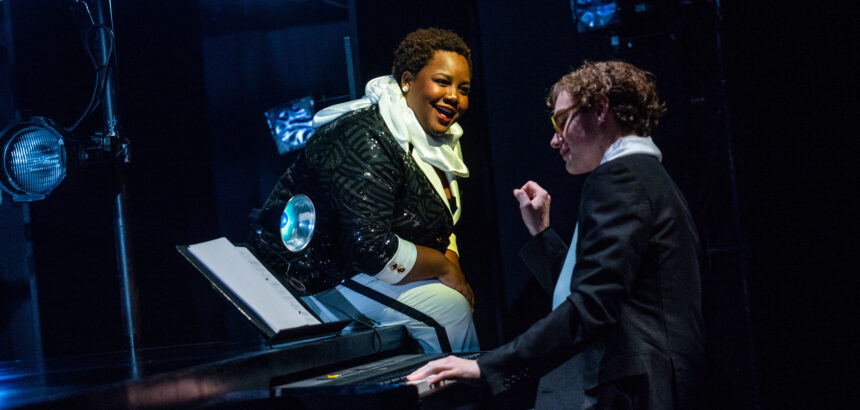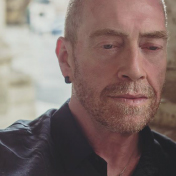What is your history with Buddies? How did it feel to be back?
Buddies goes back as far as I remember working in Toronto—from early days of seeing shows like Pasolini/Pelosi and The Dressing Gown by Sky Gilbert, and being introduced to the productions of Hillar Litoja, Daniel Macivor and Daniel Brooks amongst so many. To say they were profound influences is an understatement—this work challenged me about what the theatre was and could be. In a broader sense, it was the gathering place for a generation of artists seeking a home for the new and experimental and the Avant-Garde. It was the place for new ideas in performance, aesthetics and points of view. At once it was a political, personal and groundbreaking space in every way. My first time directing at Buddies was as part of the Rhubarb Festivals in 1986, 87 and 88 – with many artists still working today and co-incidentally with Martin Julien. My next time directing was in the first season at 12 Alexander Street, with Gordon Armstrong’s Scary Stories in 1996. I was super proud to present Buddies’ production of Waawaate Fobister’s Agokwe, in Ottawa, when I was artistic director at the National Arts Centre in 2011. So, it was great to return to Buddies to be reacquainted with a space and generations of new artists still dedicated to this principle of change, innovation, disruption and playfulness. For my almost 40-year encounter/relationship with Buddies, I remain inspired and challenged about what theatre can be.

How was it working with long time friend Martin Julien on The Man that Got Away, in particular since it draws so much on his personal and family history?
Martin and I went to theatre school together from 1980-84. It was amazing to be catapulted back into our shared history and reflect upon it anew. There is a curious thing about memory that perspective and time both enhance and distort. It was a careful dance between the two – and learning to distinguish what actually occurred versus how we wanted things to be. I knew Martin’s parents and was around during so many of the moments dramatized in The Man That Got Away—but I never knew them as Martin experienced them, or with the lived knowledge since. The process was a dramatization of memoir, that would invite an audience into a family history, but also an imagined one, as the character of Judy (both a student of Martin’s at Sheridan College and the ghost of legendJudy Garland) exists to question the delusions of nostalgia and informs the present sense of what legacy one generation leaves for another.
You have worked with many new generation artists both on The Man That Got Away and The Hooves Belonged to the Deer. What do you find exciting about working intergenerationally?
Over the course of a long-time making theatre, we develop and hone our practice and find a vocabulary for what we do. While (hopefully) our working methods are in a constant state of growth and evolution, one assurance of this, is the discovery of how one’s practice “lands” and resonates with new and younger imaginations. I relish in the dialogue between experience and invention, between tradition and innovation, and between the excitement of impulse and the virtuosity of craft. Collaboration is generally understood to represent the situation in which two or more people work together to create or achieve the same thing. It traditionally implies shared goals and working together towards a common purpose. However, intergenerational collaborations are also characterized by difference; working jointly and in dialogue with one another to find points of argument (even disagreement) in a continuing dialogue of respect and listening and arriving at something singular in our respective bodies of work. In this regard a quality of collaboration between younger and older artists can mean creating something that would only develop by the unique nature of each participant, effecting and influencing each other. There is an alchemy to this. It sincerely keeps the work “fresh”. Experience is a good when a mindful teacher. However, what has worked for us in the past, does not always hold true in the present. The longer you do it, the more you learn, but also the longer you do it—the more entrenched a process can become. It is always worthwhile to be challenged. Wonderfully, working with younger artists keeps this older artist, vital.

What was it like bringing a queer epic like The Hooves Belonged to the Deer to life at Tarragon Theatre?
I have known Makram Ayache since 2017, when he was completing his MFA in Performance/Creation at York University. I have been really honored to continue work with Makram since our first meeting. Certainly, there has been a focused mentorship in the passing-on of experience and knowledge, but perhaps more accurately it has been part of a personal Succession Plan, where ideas, craft and professional guidance have not only been shared, but challenged and re-examined, with a purpose to transform and evolve our theatre forward – mutually. There is a sense of tradition and innovation, one cultural practice speaking to another, one generation identifying our shared goals and differences. As Queer artists of distinct cultures, generations and practice, we arrive at a common ground in telling stories that challenge our sense of selfhood and celebrate new ways of decentralizing heteronormative constructs. I have learned so much in this partnership. Ours is a relationship of debate, mutual education and exchange. I am learning new languages and putting my pedagogy and aesthetics to revitalizing scrutiny. The Hooves Belonged to the Deer re-visions a mythology of paradise and expulsion. In the context of colonizing mythologies, the play works like a new mythology for our time; an erotic reflection on forbidden knowledge and also an ironical depiction of revenge.
How do you feel about working in theatre spaces in a post/late-pandemic world? Does “the room” and process differ from before?
Yes. Of course. And… no. we have always been charged with creating connected spaces in order to do dangerous things. But it hasn’t always been so. The lockdown gave us all pause to reflect, reconsider and change – and also to strengthen and reinforce with bravery, ideas and practices we champion. We want “the room” to have low stakes, in order to explore the high stakes of any given play. In so many ways, since the theatres have opened up again, it has felt all brand new and yet achingly familiar. The pandemic gave so many of us a renewed sense of value in art-making—nothing can be taken for granted. Post/late pandemic has brought a daily practice for our health and well-being as an integral part of making theatre. Some folx like to describe it as human before artist—however, I struggle with any suggestion that the two are mutually exclusive. Maybe this time can invite our artist as a fully evolved human.
What are you excited about looking into the future of theatre?
I have no crystal ball. I am ready for what the theatre demands we be and confident we have the collective tools to take these challenges on. I also live in hope we learn from our mistakes—and while mistakes are inevitable to risk and exploration, we embrace them. I do believe we know more to do better. And we fail better for worthier things. Risk is everything in making exciting art—and what we risk reveals what we value. I am excited about seeing what the “future” artists make our future to be.


